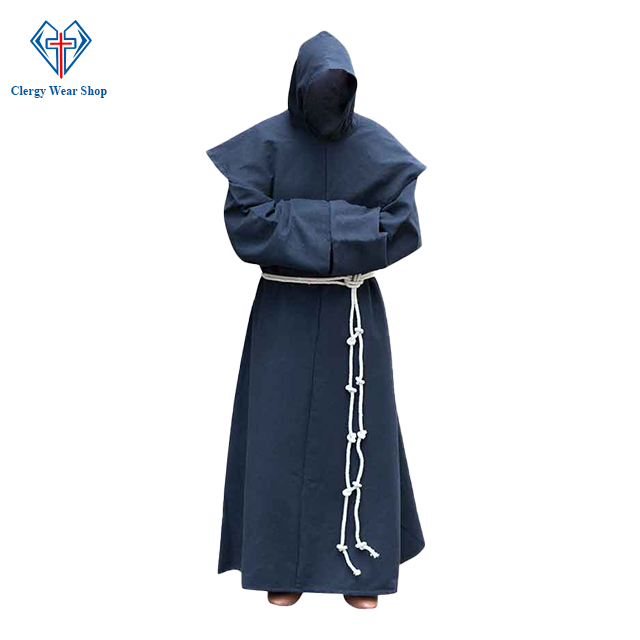Clergy Robes for Men
The Monks Habit for Sale
The Monks Habit: A Symbol of Devotion and Discipline
When we think of monks, one of the first images that come to our mind is their distinctive attire, known as the “monks habit.” This iconic garment holds great meaning in various religious traditions around the world. Explore the history, symbolism, and cultural importance of the monks habit. From its origins to its present-day significance, we will delve into the fascinating world of this timeless attire.
Origins of the Monks Habit
The roots of the monks habit can be traced back to the early days of monasticism. In the Christian tradition, the habit finds its origins in the clothing worn by the Desert Fathers, and early Christian ascetics. These individuals sought a life of solitude and contemplation, distancing themselves from worldly distractions. The simple and practical, design of the habit was well-suited for their austere lifestyle.
Symbolism and Design
The monks habit is more than just a piece of clothing; it is a symbol of the monk’s commitment to their spiritual path. The design of the habit often varies depending on the religious order and its traditions. However, common elements include a tunic, scapular, hood, belt, and sometimes a cowl. The color of the habit may also hold symbolic meaning, with different hues representing different virtues or ranks within the religious hierarchy.
Function and Practicality
Beyond its symbolism, the monks habit serves practical purposes as well. The loose-fitting nature of the garment allows for freedom of movement, enabling monks to engage in physical labor, meditation, and various rituals. Additionally, the habit provides a sense of uniformity and identity within a monastic community, emphasizing the communal nature of religious life.
Cultural and Historical Significance
Throughout history, the monks habit has played a significant role in shaping cultural and religious landscapes. Monastic orders have been instrumental in preserving knowledge, advancing education, and providing social services. The sight of a monk in their habit has long been associated with acts of charity, wisdom, and spiritual guidance, making them highly respected figures in their communities.
Adaptation and Evolution
Over time, the monks habit has undergone adaptations to suit changing circumstances and cultural contexts. Some religious orders have modified their attire to accommodate, modern sensibilities while still maintaining the essence of their traditions. This ability to adapt reflects the dynamic nature of religious practices and their ability to endure through generations.
Misconceptions and Stereotypes
It is important to address, common misconceptions and stereotypes associated with the monks habit. While popular culture often portrays monks as mysterious or reclusive figures, the reality is far more diverse. Monastic life encompasses a wide range of activities, including study, teaching, community outreach, and humanitarian work. The habit serves as a visible reminder of the commitment to a life dedicated to service, humility, and spiritual growth.
Contemporary Relevance
In the present day, the monks habit continues to hold significance in both religious and secular contexts. The sight of a monk in their habit can evoke a sense of awe, reverence, and curiosity. Many individuals are drawn to the peaceful aura and wisdom that monks embody, seeking guidance and inspiration in their own lives. The habit serves as a reminder of the timeless values of devotion, discipline, and the pursuit of inner peace.
The monks habit stands as a powerful symbol of devotion, discipline, and spiritual commitment. Its origins rooted in ancient traditions, the habit has adapted and evolved over time, maintaining its relevance in the modern world. Whether worn by Christian monks, Buddhist monks, or practitioners of other faiths, the habit serves as a visible reminder of the virtues and ideals that guide those who choose a life of religious contemplation. The monks habit transcends language and cultural barriers, speaking to the universal human quest for meaning and purpose.
So, the next time you encounter a monk in their habit, take a moment to appreciate the profound symbolism and the centuries of tradition that it represents. see more…

 Clergy Robes for Men
Clergy Robes for Men Clergy Robes for Women
Clergy Robes for Women Clergy Shirts for Men
Clergy Shirts for Men Clergy Shirts for Women
Clergy Shirts for Women